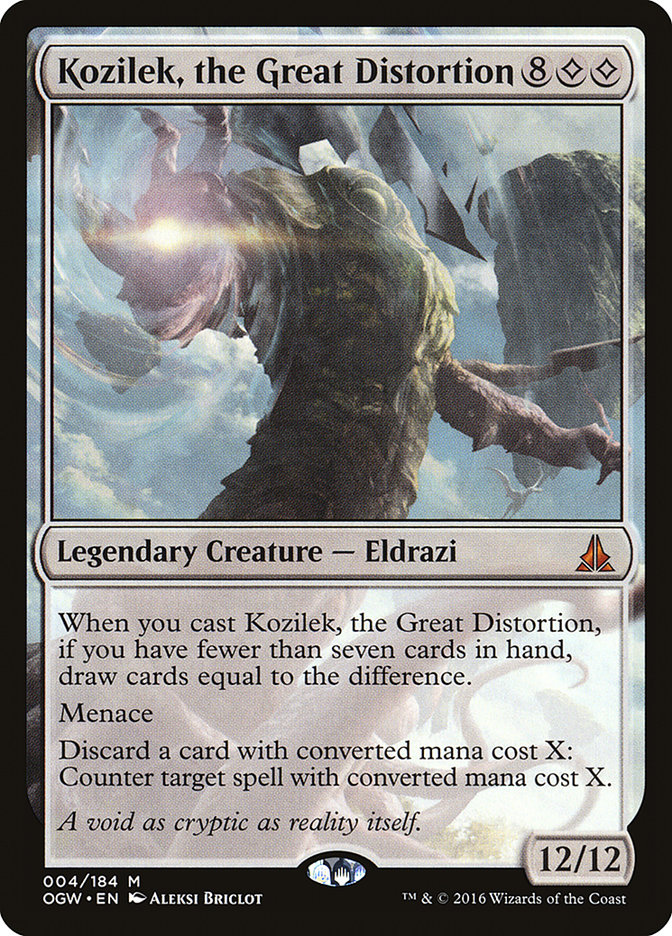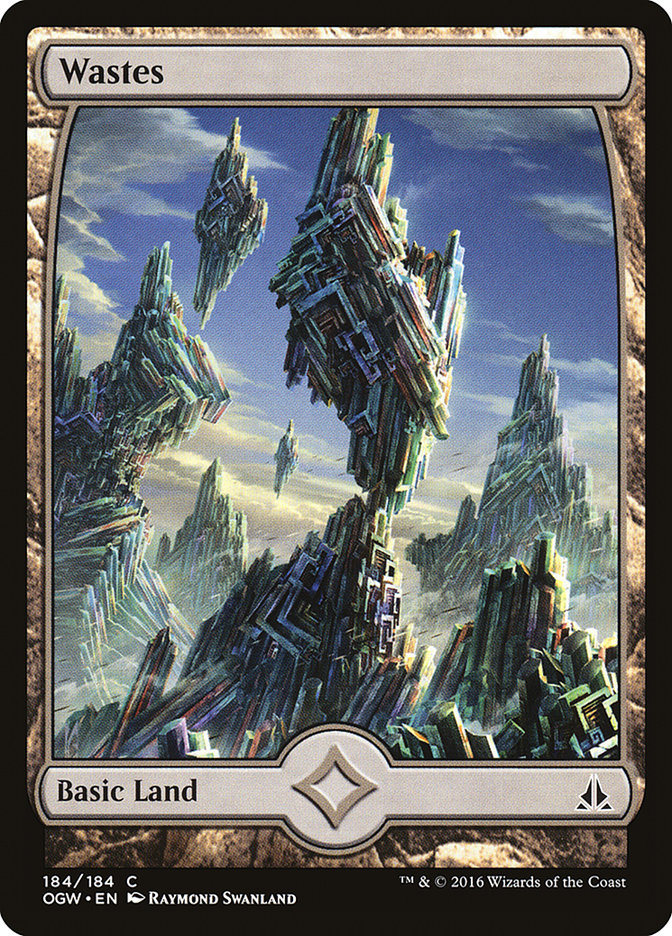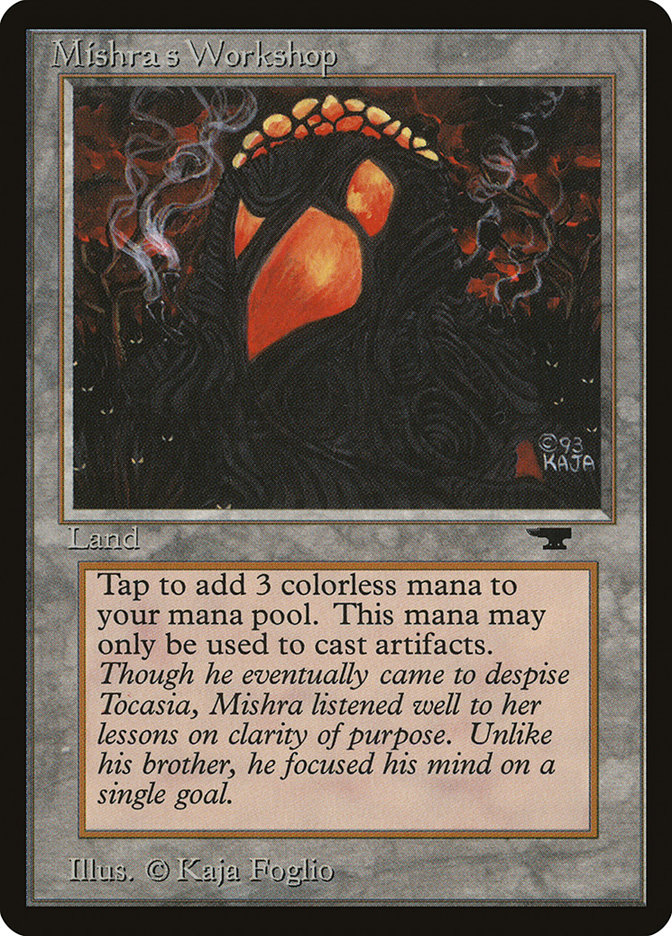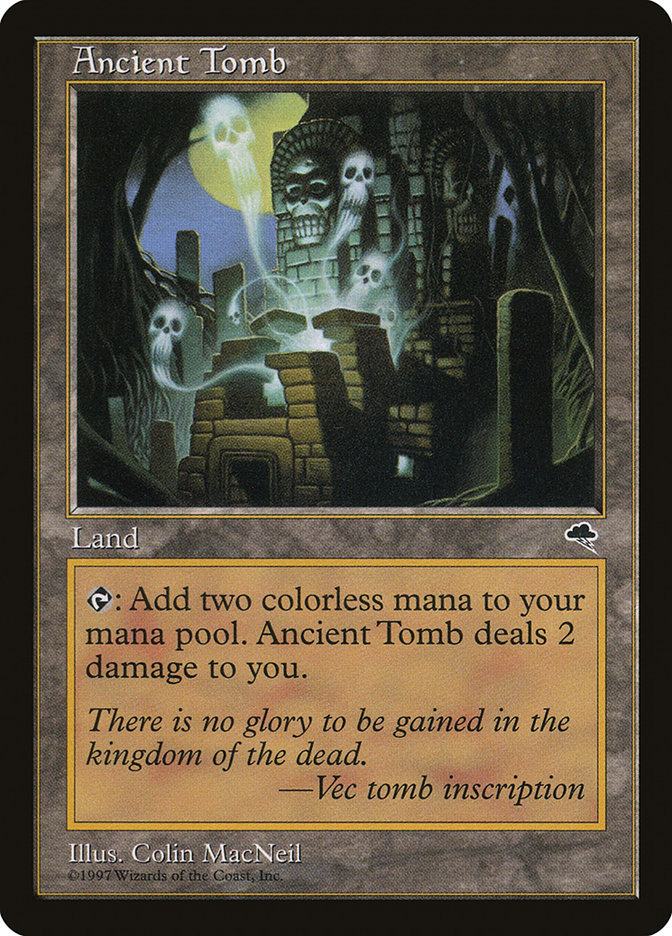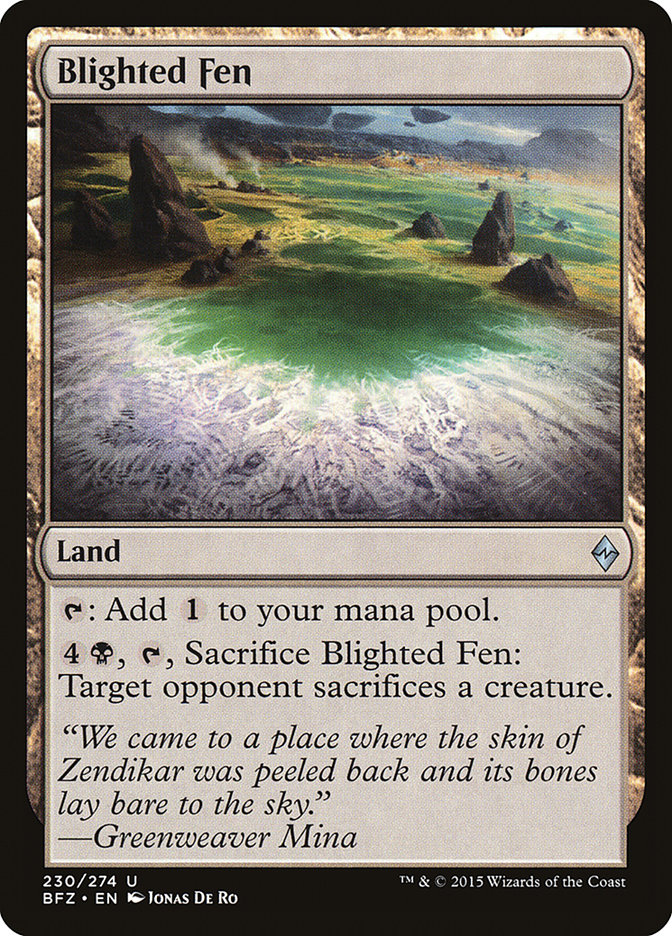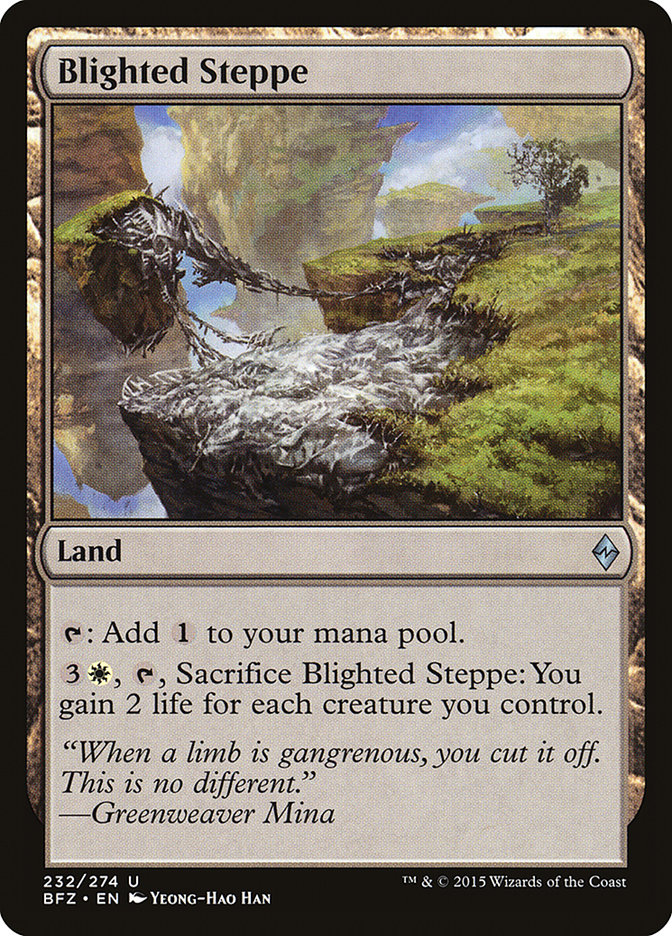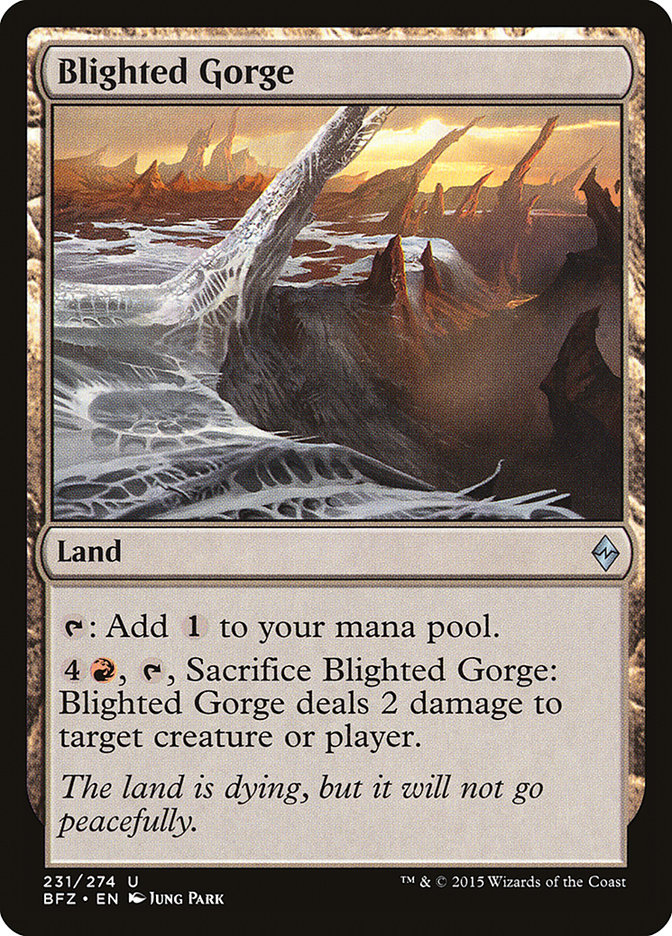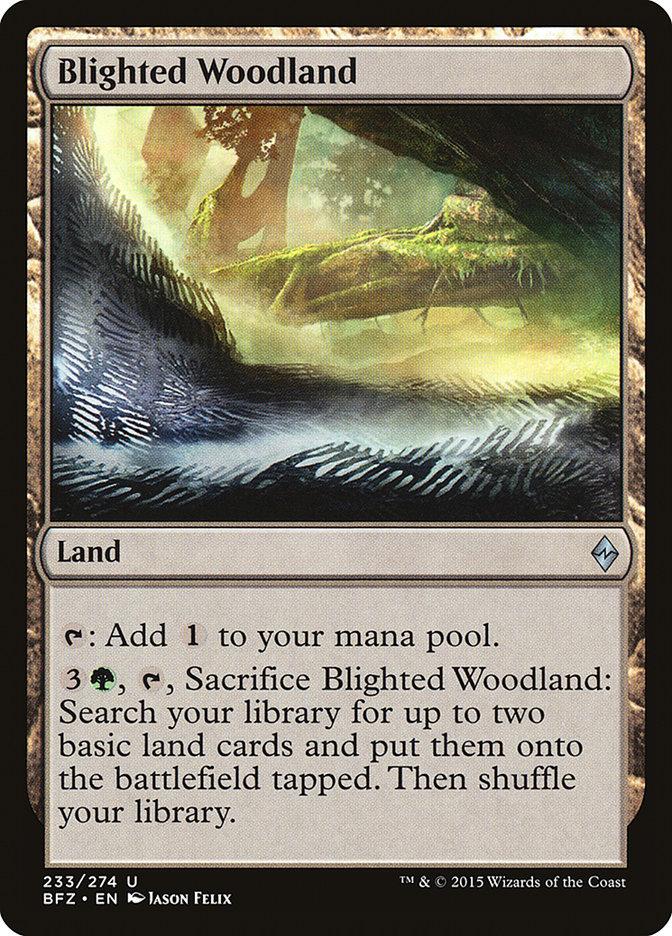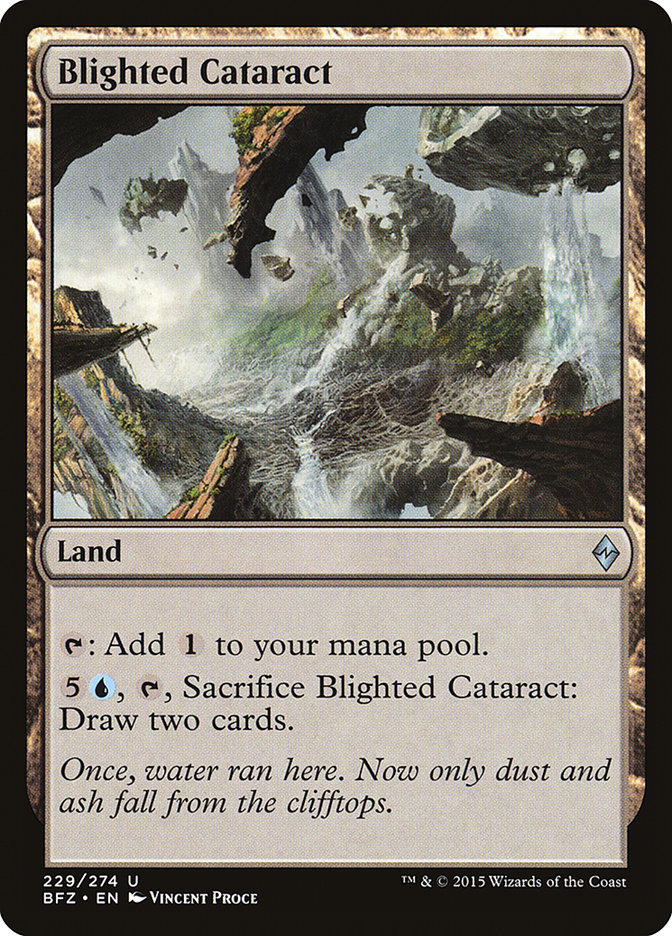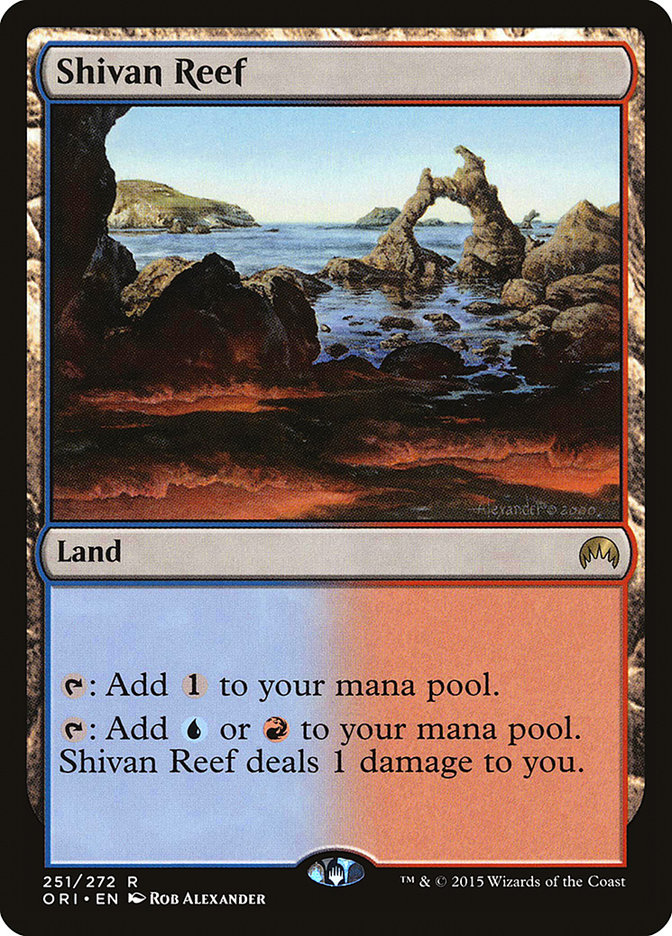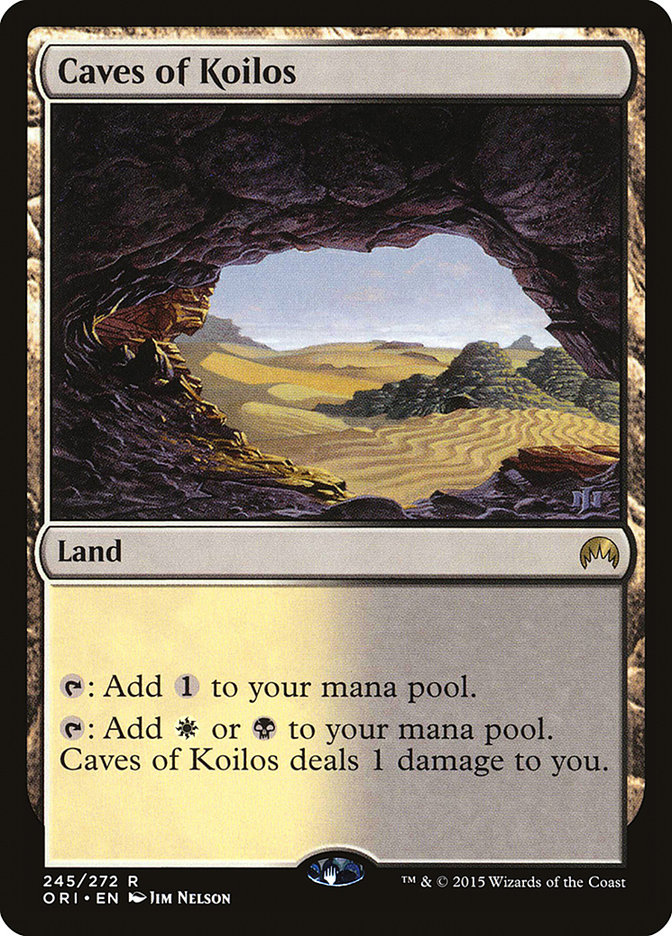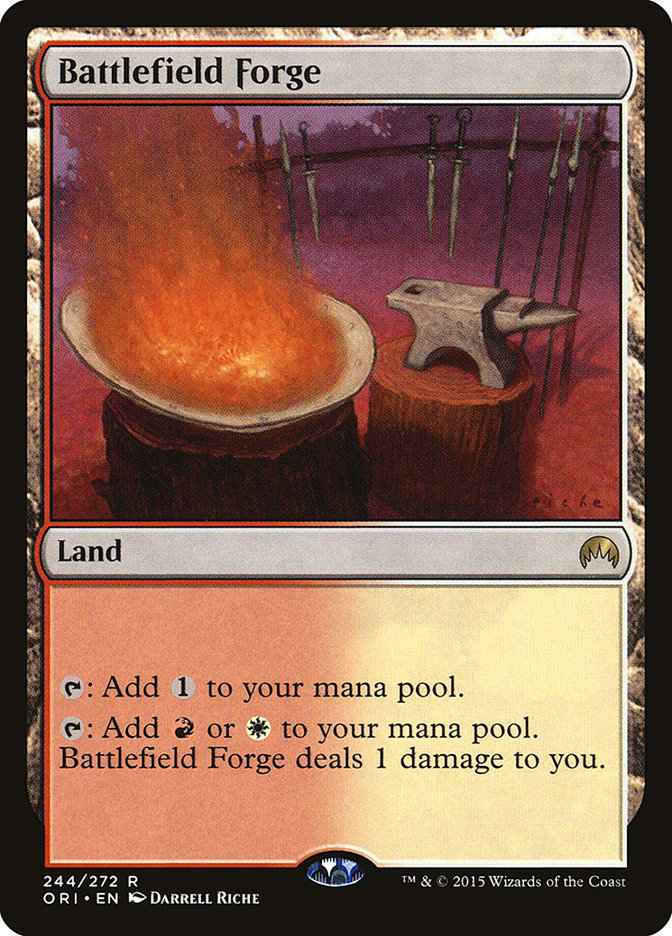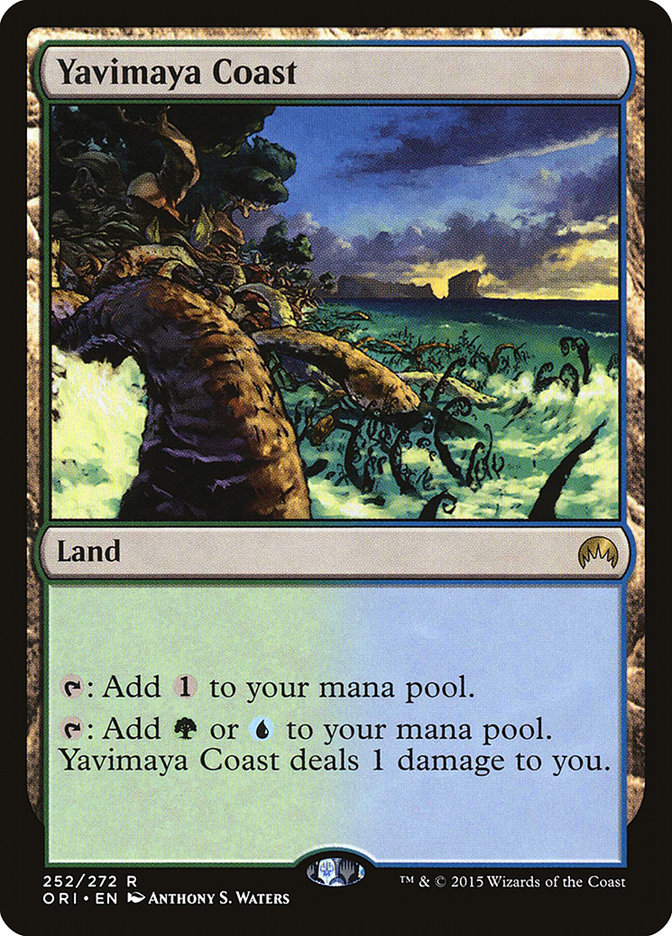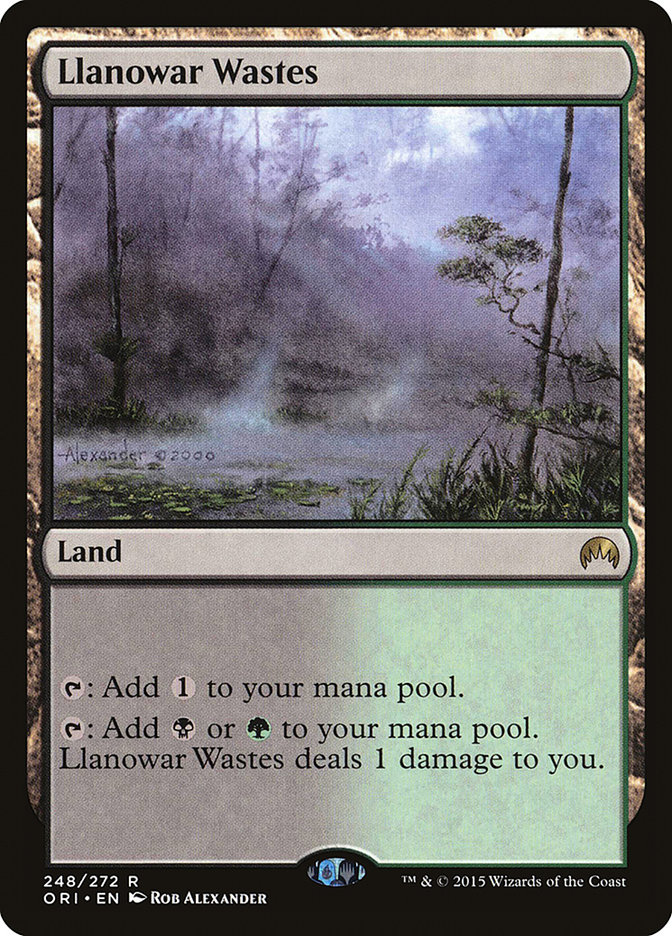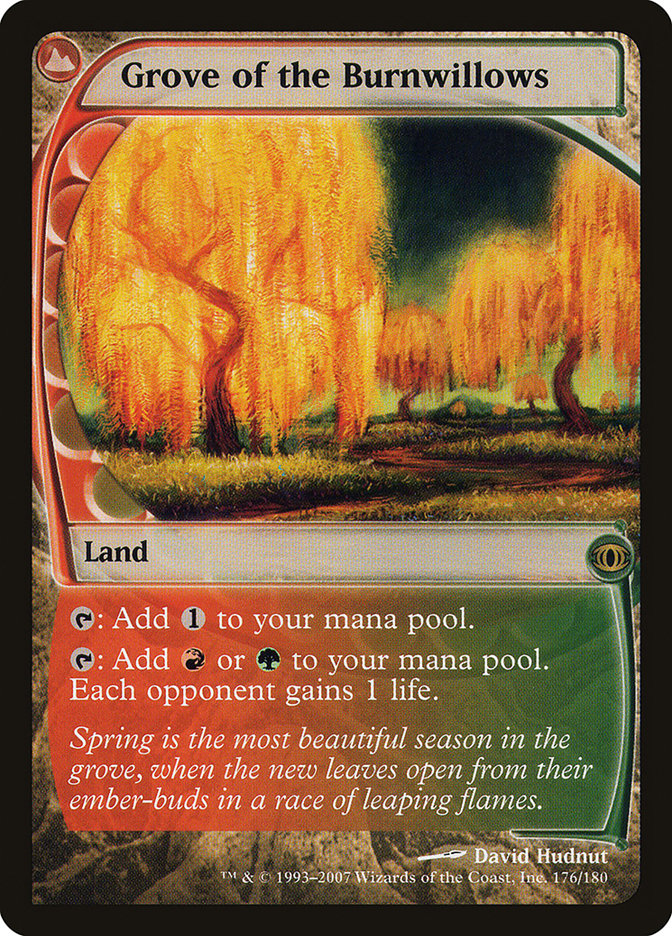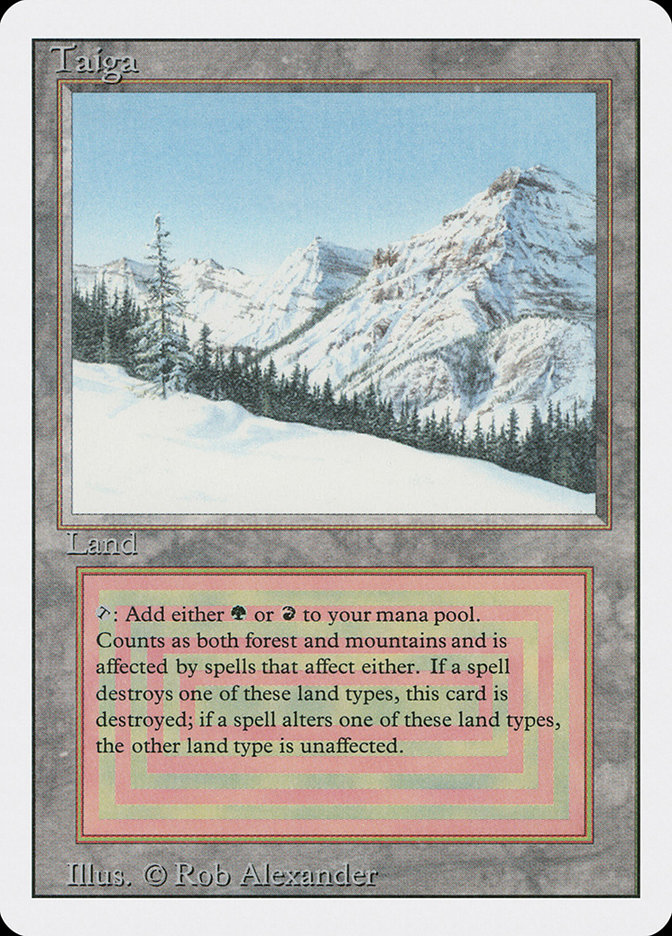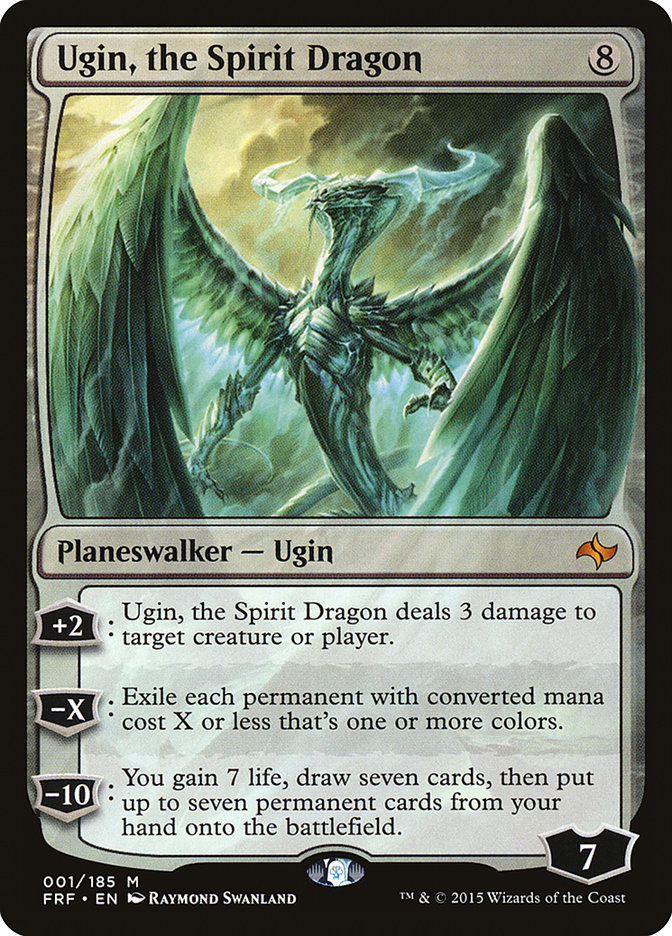How appropriate. The Great Distortion, revealing everything we knew about the mana system was always a big lie. Fortunately, the truth that was hidden was merely odd, difficult to comprehend, and not actually reality shattering.
Colorless mana requirements are coming to Standard (and every other format) very soon. Kozilek is only the start of what will likely be a significant number of new cards showcasing this mechanic and as always, these cards will likely be positioned to have immediate impact in (at least) Standard, and probably more.
Even without a list of other cards to look at, there is a lot we can determine just by looking at the support for them. You are still paying a mana cost here, and as such, supporting it is going to be the key resource to manage.
Takeaway 0: Colorless is Basically a Color
I’m labeling this as zero since this was basically the talking point when everyone first saw Kozilek, the Great Distortion, but colorless mana is being used in this set as if it was a sixth color.
If you want to play a colorless spell or card with a colorless required activation, you are “splashing” colorless. If you want to play multiple cards like this, you are basically adding another color to your deck.
Count your color requirements as such. This season’s Standard decks probably aren’t the best indicators of required counts as the mana is so absurdly good, but looking back in time, you probably want 9-11 sources for a splash of a couple key effects and fifteen+ for a solid commitment.
Takeaway 1: A “Mono-Brown” Colorless-Only deck is Unlikely
Historically, there have been a number of mono-colorless decks even without colorless mana being required to cast spells. Every single one of them was mono-colorless not because of the spells, but the lands. They are all colorless because Mishra’s Workshop or Ancient Tomb is just too good and there are enough crazy ramp lands in the older formats to support a deck like that. That is definitely not the case right now in Standard, and there would have to be a lot of crazy Colorless lands and early support spells for this deck to be functional there.
A mono-colorless deck spawned from Oath of the Gatewatch cards requires basically the same amount of support as any other mono-color deck. You start running into the classic “purple” problem here, where if you want your new sixth color to be immediately as much of a player as the others you have to push the power level crazy hard. I’ve seen multiple instances of people putting “Purple” Mana Drain into their custom card sets to make the color flashy enough. Right now, all of the formats are really high-powered, and Oath of the Gatewatch is a single small set. The amount of colorless cards that would have to be pushed to make going mono-colorless attractive on power alone is absurd and basically impossible.
Along the same lines of a mono-colorless deck being a mono-color deck, you need the same conditions that spawn normal mono-color decks. You need some big payoff card for being mono-color, a big tempo payoff for having untapped perfect mana, or you need the mana in the format to be unreliable for two-color decks. There was a perfect confluence of these things in Theros/Return to Ravnica Standard, with devotion, powerful one-drops like Thoughtseize, and lots of missing fixing prior to all ten Temples being released. Every single format is currently operating on fetch-dual mana, so your mana is great and just too good to play mono-color anything. Even mono-red aggro in Standard is splashing because it’s such a free roll, and the heavy colorless decks in Modern are splashing all five colors because Mox Opal and Glimmervoid exist. Powerful things to curve out into and big incentives are possible, but this goes back to the previous point. Doubly so when you realize the colorless incentives in Standard are mostly “colored” devoid cards like Ruination Guide and that the best colorless lands make colored mana.
It’s possible that some time in the future of Standard the mana dries up and we see mono-colorless or close to it pop up, or a single card gets printed that makes a deck in an Eternal format tighten up its mana, but odds are until more sets are printed with this mechanic, mono-colorless isn’t much more viable than it is now.
Takeaway #2: Your Colorless Payoff Cards Mean Everything
Kozilek, the Great Distortion is a surprisingly low commitment card for colorless. It’s more a commitment to mana ramp than anything else. By the time you get to ten mana, you should be able to figure out your colors to cast whatever you want. Doubly so when you realize that traditionally all of the things that add oodles of mana to your mana pool default to colorless mana.
Now, double colorless on a four-drop? That’s a big deal.
The timeframe you need to cast your colorless spell or activate your colorless ability is going to define how many sources you need to cast it. This a very obvious premise derived from Takeaway #0. It’s the same as any other color, but it’s worth restating the basics so you actually keep thinking that way.
Similarly, if you have a colorless land with a colorless activated ability, it’s the same as a colored mana source with an on-color activation. That means you are not splashing that effect unless it is good enough for a real commitment to the color or lack thereof, just like how splashing Treetop Village is often not the best idea (but not always!).
Takeaway #3: Don’t Stretch Your Colorless Sources
It seems at first glance that the Blighted lands were a clear plant as colorless enablers. They are all just Wastes with a bonus ability, but there is a cost to using them as colorless sources due to the inherent tension of the sacrifice effect and using them for mana.
When you have a land like Blighted Cataract in your deck, the idea is usually that you are trying to bias high on lands so that you can curve out to midrange drops readily but are trying to mitigate flood by cashing in your lands for value when you draw too many. If you want to cash in your Blighted Fen as a removal spell but it is your only colorless source, you are going to be in a bind.
Again, this is basically the same don’t splash Treetop Village logic I pointed out above. You are still going to play on-color Blighted lands before Wastes the majority of the time because you might use their ability at times, but if you are just splashing colorless, don’t count on Blighted lands to let you skew higher on land count unless you are deliberately adding them as your “bonus” lands.
A colorless creature-land like Mutavault has a slightly different issue, where you can crash in when you don’t have a spell to cast. Except for if they have removal up that threatens it or you wanted to trade it for an actual card in combat, then you suddenly can’t. Your land still provides value, just reduced value compared to the normal expectation of the card.
Note there is a big exception here to both the “don’t count on using it” and “play Blighted lands over Wastes” parts of the equation in Blighted Woodland. In fact, Blighted Woodland really isn’t similar to any of the other Blighted lands as its payoff in case of flood is just more lands. Notice the basic land clause there and how Wastes is a basic land. When you cash in your Blighted Woodland, you are replacing it with other colorless sources for a net neutral or even positive colorless production rate as long as you commit to having two or so Wastes in your deck.
Takeaway #4: Lands That Make Colorless and Colored Mana are Now Tri- or Dual Lands
Now we see why the painlands were given another go in Magic Origins. We will probably look back on these as the lands that gained the most from Oath of the Gatewatch. Your CavesofKoilos makes white, black, and colorless! Importantly, that colorless part is painless. That’s an odd pattern of pain and no pain that as far as I know has only really been seen with Murmuring Bosk before, but it’s going to be a big deal in terms of making colorless mana cards playable.
There are even a couple five-color lands that make colorless in the format: Haven of the Spirit Dragon, Crucible of the Spirit Dragon, and Ally Encampment. Expect some odd theme hybrid brews as a result of being able to fix.
The big gainers in Modern are going to be the filter lands, which is presumably part of why they are the bulk of the expeditions for this set. While there is a bit of tension between drawing a filter land and another colorless source or two, they amplify your actual colored mana while fixing for colorless! Again, still painless mana that matters. Another painless colorless dual land that shockingly didn’t get an expedition printing is Grove of the Burnwillows, which I will now probably just refer to as “super Taiga” as it is just a painless untapped tri-land.
Also of note in Modern are a couple five-color colorless lands. I don’t think Tendo Ice Bridge is going to be a huge deal here, but I’m interested in the fact that Cavern of Souls lets you double down with Ally Encampment or Primal Beyond for a tribal source of all the colors. If a good colorless-only utility spell gets printed, keep note of this. The odds aren’t great given that spells would cause crazy color pie bleed, but it might be there.
Takeaway #5: Standard Mana Doesn’t Play Well With Colorless Mana Cards
Shambling Vent and creature-lands don’t produce colorless mana.
Cinder Glade and the other Battle lands don’t produce colorless mana.
Polluted Delta and the other fetchlands don’t find lands that produce colorless mana.
Opulent Palace and the other tri-lands don’t produce colorless mana.
These cards are the core of almost every Standard manabase for good reason. Either they give you absurdly flexible mana, cost almost no tempo, or provide absurd card quality, or really all of the above.
Consider the cards you have to compete with if you are trying to skew these known shells. Odds are Siege Rhino is not going to be good friends with Eldrazi mana. Same with Mantis Rider. These decks stretch far enough as is to just hit their wedge mana, so I don’t see them incorporating a bonus unfetchable color. If you are playing “colorless matters” cards, they aren’t slotting into an existing shell.
Looking at the existing decks, there are three new options I foresee playing out:
1) A midrange or tap-out control deck slims down to two colors to fit colorless lands for the colorless cards that are just good rates or value. This is likely an enemy color deck due to the painlands, with W/B as the most likely just due to the available cards, and R/W or U/R as the other strong options due to the Haven of the Spirit Dragon–Thunderbreak Regent package slotting in well. Of course, if the colorless cards that matter are green things with activated colorless abilities, this could all change. Similarly, if we receive new colorless producing dual lands that allow allied color pairs to cast these new cards easily, things really open up.
2) Some efficient colorless aggro cards are printed similar to the devoid cards like Forerunner of Slaughter. A mono-color deck “splashes” colorless off of painlands, which are fine fixing even if they make colorless for free and your main color for pain.
3) The powerful colorless matters cards are clunky but powerful, like Kozilek, the Great Distortion, and the decks that cast them are activating Blighted Woodland or casting Explosive Vegetation to find Wastes.
Takeaway #6: Kozilek, the Great Distortion is Going to be Pretty Awesome in Eternal Formats
I’ll keep this short and simple. The 12-Post and Tron decks that Kozilek, the Great Distortion slots into naturally have a pretty good converted mana cost spread for its discard to counter ability. They are light on four- and five-drops, and 12-Post is light on twos, but that is somewhat fixable. Just having a virtual counter lock on ones and threes (via Oblivion Stone or Show and Tell) is really strong.
I’m not sure “pretty awesome” is better than Ulamog, the Ceaseless Hunger, which is basically KO on cast against a lot of things, but Kozilek absolutely closes the door in a lot of spots where Ulamog might let them have the nuts to win. At the least, Eye of Ugin makes the first copy worth a try in both decks. I would actually say that Kozilek is less important than last year’s big colorless winter spoiler of Ugin, the Spirit Dragon, but that’s more about Ugin being really good and less a mark against the Great Distortion.
(Aside: Eye of Ugin does not work “the way you want it to” with Kozilek. See the printed text of Helm of Awakening or the printed reminder text of Edgewalker for a clearer reminder of how generic mana cost reduction compares to reducing specific mana requirements.)
Takeaway #7: Colorless Mana is a Very Flexible Mechanic
Colorless mana is somewhat linear in that committing to some colorless required cards reduces the cost of playing more, but it isn’t fully linear. Your eighth colorless card doesn’t directly add to your seventh the way Allies does. Devoid is a more apt comparison with many secondary colorless enablers being the draw, but at the same time, colorless mana is more than token text. There is a real cost to building towards it that skews your other cards. You can’t just throw a Kozilek, the Great Distortion in your deck, and the same would be true even if you were talking about a four-drop with an equivalent colorless commitment.
This mechanic is very open-ended. This first look only defines the resources that currently exist to build towards it. A lot of what comes from here is dependent on what it makes you want to build towards. The specific cards that provide unique effects or good rates are going to be the real drivers here.
One sneaky retrofit later, and a whole unseen world of possibilities has opened up.

